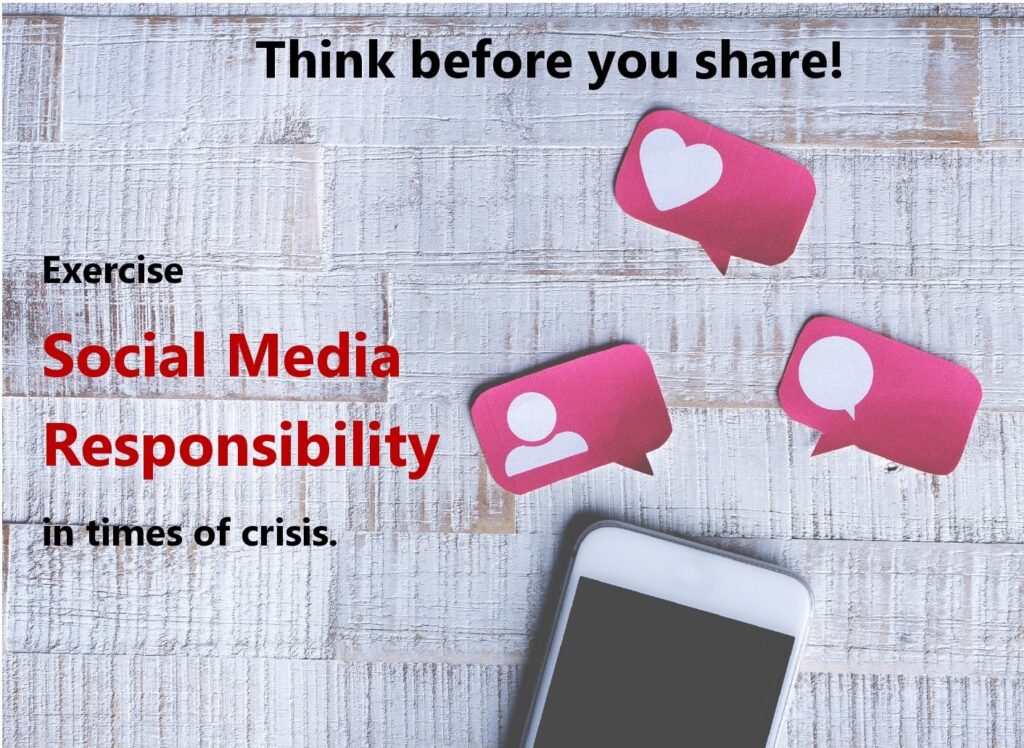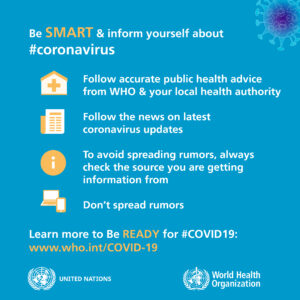
Social Media in the times of the Coronavirus crisis
There will be very few people in the world currently who are not aware of the words “Novel Coronavirus” or COVID-19. The world is currently reeling under the COVID-19 threat. India too is now seeing cases on the rise. It has reached such a stage that a simple act of sneezing or coughing can instill fear and suspicion amongst people.
What is COVID-19
As World Health Organisation mentions in its site (https://www.who.int/health-topics/coronavirus) Coronaviruses (CoV) are a large family of viruses that cause illness ranging from the common cold to more severe diseases such as MERS and SARS. The COVID-19 is a new strain of the virus that has not been previously identified in humans. Coronaviruses are transmitted between animals and people. However, we do have many known coronaviruses that are identified in animals and have not yet infected humans.
The rapid spread of the COVID-19 has now caused the World Health Organisation (WHO) to term it as a Pandemic (an outbreak of the disease that affects the world at large).
Role of Social Media in times of crisis
In the current times, we use social media extensively. People around you are always sharing messages, reading stuff, liking, posting pictures or stories, etc. Earlier, we mainly relied on newspapers, television and radio for information. With the widespread accessibility of the internet, we now generally use the same to share information online. Social Media has become an important platform for online communication. Using channels like Facebook, Twitter, WhatsApp, etc., messages are sent from one person to another and thus they become ‘viral’. It has become an easy, cost-effective and fast way to pass on information. With its growing popularity, Social Media has become a powerful tool to influence people and affect their thoughts and actions.
Advantages of sharing messages online in times of the COVID
- As an online information sharing platform, it has the power to reach millions in a couple of seconds. Hence, it is fast becoming the most preferred medium for online communication.
Social Media has its advantages as it has helped the government and health organizations to pass on important information on symptoms, cure and precautions to be taken. This has helped contain the spread of the virus to a large extent.
It allows us to track the spread of the virus globally. You can get real-time updates of lockdowns, airport closures, designated help centers, etc.
It has worked as a support system for people seeking clarification, battling panic and has provided emotional support in many cases. It has also helped people find authorized hospitals in times of need.
Students can complete studies online and in some cases even take exams. Educational institutions use many internet platforms to keep students and parents updated and stay connected. This has ensured that there is no loss of time for the students. This is true for the working population also. The option to work remotely minimizes the risk of contamination while ensuring that work can go on and the economy doesn’t suffer much.
The negative aspects of Social Media in times of crisis
There can be too much of a good thing also. This is so true for sharing messages online. For the last couple of months, every day I wake up to at least 10 new messages or forwards or shares on my Facebook, WhatsApp and Twitter accounts that are related to Coronavirus. Some are informative, many are repetitive and then there is the lot that is just fake or spreads panic.
For instance, when the Coronavirus outbreak news was still new, there was a story doing the rounds on WhatsApp about it being spread via chickens and later it was found that it could be swine flu and not COVID-19.
Recently, we had an instance of a message posted on WhatsApp which provided no clarity but created panic about possible contamination in the neighborhood. By the time investigations were done and it was found to be a false alarm, there was utter panic among the residents for most of the day. The one incomplete message was picked up and shared amongst many groups, causing chaos and leading to unsolicited and impractical advice.
The current unavailability of hand sanitizers can also be attributed to social media. Of course, there has been a sudden increase in demand which the suppliers are not able to meet. But because of the panic created, some people have gone overboard stocking up on sanitizers, leaving none for others.

Little things we can do to ensure that we use Social Media responsibly
The words from Spiderman “With great power comes great responsibility” are very apt for Social Media users. It is a powerful medium when used wisely, but can cause havoc and damage if used inappropriately. Here are some things we can follow to ensure Social Media responsibility.
- Every day, you get ‘news updates’ of the current status of the Coronavirus spread. Think before you share, like or forward.
- Breaking news of deaths, lockdowns, COVID-19 cures, etc are sometimes started by anti-social elements to cause panic amongst people. When you come across such news, please verify with the source if possible. If that is not always possible, use the internet to check if the information is correct before you pass it along. There are many sites on the internet that you can check for fake news.
- Avoid repeated and contradictory forwards. It just confuses people and when there is an overload of messages, people just tend to scroll through without actually reading. Important information may be lost in all the unnecessary forwards.
- We can also add insensitive jokes or comments to the above list. Apart from adding to the unnecessary noise on Social Media, it may adversely affect the people who are targeted or impacted.
- If you have a query or feel compelled to share some thoughts / doubts, please do that in a one-on-one chat. Avoid posting such things in an open group or platform. Else, the chances of misinterpretations are higher. Also, people may not even wait for confirmation of the news and could just share it forward, leading to more chaos.
- Your responsibility doesn’t end at just sharing or forwarding a message. You are responsible for what you post or share. So think twice before you post.
COVID-19 Symptoms to look out for
The symptoms begin gradually and sometimes go undetected for a couple of weeks. In a few cases, infected people don’t develop the symptoms at all. Protect yourself by seeking timely medical help, if required.
- Symptoms include fever, tiredness and dry cough
- In some cases, patients may experience pains, stuffy or runny nose and sore throat
- In severe cases, the infection can cause pneumonia, severe acute respiratory syndrome, kidney failure and even death.
- Older people and people with other medical conditions are more prone to developing serious illness.
- Seek immediate medical help if you have any of the symptoms.

Tips to protect yourself and others from the risk of COVID-19 contamination
- As per WHO, basic hand hygiene goes a long way in helping to combat the spread. These include washing hands regularly with soap and water (or using a sanitizer if soap and water are not accessible) and maintaining respiratory hygiene such as sneezing into your elbow. (Sneezing into your elbow is recommended as it ensures that the germs are not spread further as compared to sneezing into your palms. You use the same palms to touch people and objects and end up spreading the germs).
- If you are coming in contact with animals, ensure that you wash your hands thoroughly before touching your face, nose or mouth.
- Ensure you cook your meat and eggs thoroughly before consuming it.
- Maintain a distance of at least 3 feet between yourself and anybody who is sneezing / coughing. This is to avoid breathing in the virus through small almost invisible droplets that a person emits when they sneeze or cough.
- Avoid close contact with others if you have a fever or are coughing / sneezing.
- Avoid spitting in public.
- Share travel history if you have been to any of the affected countries.
- Stay informed with the latest updates and ensure you follow all government-issued guidelines.

Please note, information & COVID-19 images have been sourced from the WHO website.
Photo by Cristian Dina from Pexels





Thanks for the informative post!
Very concise.
Thank you!
Hi, after reading this amazing paragraph i am also
happy to share my knowledge here with colleagues.
In India, we know all our rights but none know our duties. Social media has become a tool for getting recognition and people keep spreading fake news which spreads faster.